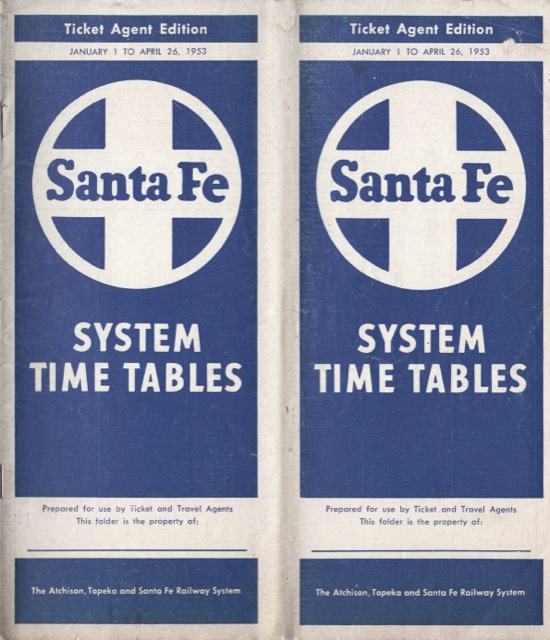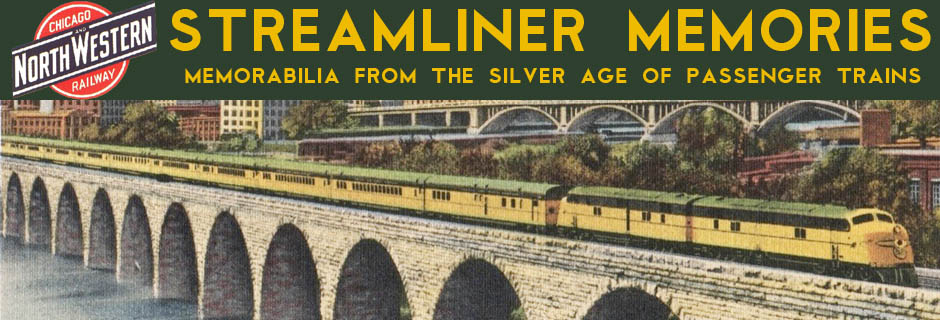In 1953, the Santa Fe still ran numerous heavyweight trains. The Super Chief and El Capitan operated daily, and the all-Pullman Chief had been completely streamlined and took about six hours longer to go from Chicago to L.A. than the other two premiere trains. The heavyweight California Limited was no longer an all-Pullman train and took about a day longer to get from Chicago to L.A. than the Super Chief or El Capitan.

Click image to download a 32.2-MB PDF of this 48-page, OCRed timetable. Click here to download a non-OCR version.
Santa Fe dropped the Navajo from the timetable in 1939. While the Scout was still listed in 1953, since 1949 it was merely a connecting train to the California Limited on Santa Fe’s southern route through the Texas panhandle; after 1953, the name would be dropped completely. The Grand Canyon Limited is shown as two trains, a northern section through La Junta, Colorado and a southern section through Amarillo, Texas. For some reason, the westbound southern section arrived in Barstow ten minutes before the northern section, but left ten minutes after.
Train numbers 15 and 16–previously used for the Fast Mail to Denver, were now the Texas Chief. Train numbers 1 and 2–formerly the Scout, whose remnant in 1953 was numbered 105 and 106–were temporarily retired, but in 1954 they would be applied to the San Francisco Chief.
